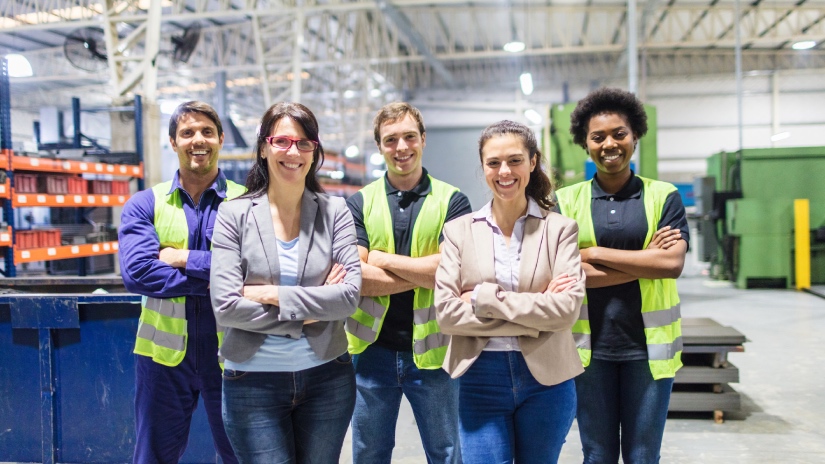By Mike Lashbrook, Vice President Digital Solutions and Senior Vice President, M&A Connected Industry, JR Automation, a Hitachi Group Company
Few would argue that automation and digital transformation are critical to the future of industrial automation. According to Gartner, 80% of manufacturing CEOs are increasing investments in digital technologies 1 — led by Artificial Intelligence (AI), Internet of Things (IoT), and Data and Analytics — to counter economic pressures and to drive growth and profitability.
And yet only eight percent of industrial organizations say their digital transformation initiatives are successful.2
Eight percent?
It’s a dismal number. Why so few?
It’s tempting to pin the blame on technology snafus. But technology is rarely the issue. Most organizations nowadays are engineering-led. They tend to jump on new technology right away. It’s cool and fun, and the solutions typically are readily available in the market.
Digital transformation initiatives in manufacturing fail because of organizational readiness. Or more specifically, the lack thereof.
To be clear, both organizational readiness and technical readiness are critical. But companies are generally better off when it comes to technical readiness due to the aforementioned reasons, and because they have a history of technology investments and the requisite skilled workers. With that as a backdrop, we advise industrial manufacturers to adhere to the following best practices when implementing digital transformation initiatives, with a particular emphasis on managing various organizational readiness issues, which span from the cultural to the financial.
Digital transformation teams should be cross-functional, with representation from manufacturing, engineering, supply chain, and material operations. But cross-functional digital transformation teams should be led by manufacturing operations. Why? Because manufacturing ops understands the floor — specifically, the problems on the floor and how to drive value.
IT is partner #1. Manufacturing operations and IT have to work hand-in-hand, with IT responsible for reliability, security and data — the latter of which is obviously the fuel for data-driven manufacturing. There are several best-practices specifically when it comes to the data.

HR (human resources) support is critical in a few regards. First, HR can lead on the critical task of bridging the gap between newer, younger employees and older employees. Our workforce is transitioning and changing, and we're getting many new employees who have a great understanding of the technology and who bring new ways of thinking. At the same time, we have our older workers, whom I often refer to as our ‘oak trees.’ They really know how the floor runs and how it operates. Companies need both, and both can learn and benefit from each other.
HR’s other critical role is bringing team leaders and operators on the floor along on the journey. People will have concerns with any digital transformation initiative. Will I get left behind? Is this going to replace me? Is Big Brother watching me? From day one, companies need to engage the floor — operators, team leaders, quality operators, maintenance operators — and make sure that they understand why the company is bringing technology in, the purpose, and how it's ultimately going to make their lives better and their jobs easier.

Digital transformations are often under-capitalized. Ongoing costs are overlooked. Companies need to carefully account for expenses like ongoing maintenance costs, integration work, data collection and potential downtime. Many of these add-on costs aren't properly captured in the budgeting process and later bite companies during implementation.
Leaders must embrace the transformation, and ensure that digitization doesn't degrade or destroy company culture.
First, leaders should never allow “data hoarding” at the top of the company, falling into the trap of thinking, Now I can solve all of these problems myself. Empower the right people with the right data to do their jobs. Problem-solving and continuous improvement should advance as long as data is driven down to the right level of the organization.
Second, leaders must bring the operator along on the journey so they understand why the organization is making changes. Why a wearable? How are these changes going to make me more effective and my job better? Leaders must not only ‘manage the change’ — they have to inspire the workforce in the process.
Ultimately, company leaders should ask themselves, How do I make sure that we stay true to the philosophies that we learned from the Toyota Way — Kaizen and Genchi and Genbutsu teamwork, respect and challenge? Culturally, nothing really has to change in the digitized world. The key is staying true to the philosophy of operator and team leader first, while driving data-driven decision-making throughout the organization.
JR Automation, a Hitachi Group Company, partners with industrial manufacturers all over the world to design, build, and integrate advanced automation solutions — from assembly automation, dispensing, and vision systems to process design, controls engineering, and software integrations. We’ve built custom technology solutions for every application, process and industry, and helped ensure our customers were organizationally ready for the change.
Learn how we are building the future of manufacturing through innovative automation solutions

SVP Digital Strategy and M&A, Hitachi Connective Industries, VP Digital Solutions, JR Automation
Mike been with JR Automation since 2020 where he launched JR’s Digital Solutions business and previously led JR’s Esys Automation Division. His role expanded into the broader Hitachi Connective Industry in 2023. Mike has 30 years of experience across the Automotive and Automation industry, ranging from Manufacturing Engineering, Manufacturing Operations, and Corporate Development & Strategy. He has spent much of his career in global assignments including, China, Thailand, Germany, Switzerland and Austria in roles working for large MNCs, joint ventures and local companies. He also invests in and advises numerous start-ups.
He currently serves as a board member of Flexware Innovation (a Hitachi Connective Industry Company) and holds Bachelor’s in Electrical and Mechanical Engineering from Kettering University, as well as Masters in Manufacturing Systems Engineering, and an MBA from Harvard University.